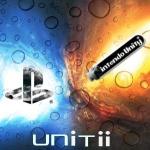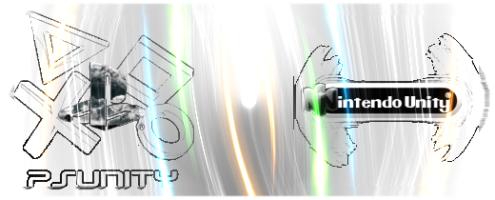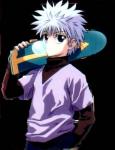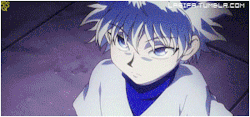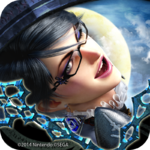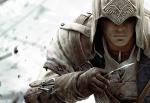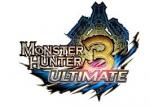
more info! looks son
damnnn goodFor details about the Wii U game, read on below.
- Features several new monsters
- Subtle improvements and embellishments
- 1080 native
- Rextextured rather than rebuilt in HD
- Improved loading times
- 50% more content than Tri
- Most of the new content comes from the upper levels of the game like the G class quests
- New monster: Brachydios
- Brachydios is like a cross between a poisonous rhino and an extraordinarily aggressive, volcanic T-Rex
- Brachydios enjoys slobbering explosive neon-green saliva all over its stumpy arms and then pile-driving you into the ground with them, leaving a residue of slime wherever it treads
- Brachydios will go into rage mode after you hit him a few times and the green nodes on his head start to glow read
- Expanded monster stamina system in Ultimate
- Can more easily see when a monster is weakened or hurt
- Monsters tire out more visibly
- AI companions Cha-Cha and Kayumba can be used in single-player
- Cha-Cha and Kayumba sing stat-boosting songs and have the odd stab at a monster during battle
- The two are mainly used to distract the monster’s attention
- GamePad shows map
- Mess around with your inventory on the GamePad as well
- Target button in both versions lets you actually lock on to monsters
also read
http://uk.ign.com/ar...rdcore-to-wii-uthe extra content compared to the wii game
Besides new monsters, this is what changed in 3G/Ultimate
- Another Shakalaka called Kayamba is able to join hunts. At first, Kayamba is not at very good terms with Cha-Cha though the two eventually become friends. Both can join the hunter in the single-player campaign, similarly to the Felyne comrades in Monster Hunter Portable 3rd. When heading into Tanjia Port, the multiplayer mode, both Shakalakas can be taken along if the player isn't playing wirelessly with a friend. When playing with another person, the hunters are allowed to bring either Cha-Cha or Kayanba, as long as the total amount of participants doesn't exceed 4.
- A new feature called Target Camera allows hunters to center the camera on nearby large monsters instead of the direction they are currently facing by pressing the L Button. This feature is optional and can be toggled via the bottom screen. If the L button is pressed twice in succession, the camera shifts behind the hunter as normal. MH4 director Kaname Fujioka has revealed that the Target Camera system was implemented into 3U as an experiment and that a further modified version would be used in Monster Hunter 4.[2]
- The bottom touch-sensitive screen can be customized to access various kinds of info and menus. All information (health bar, map etc.) can be optionally displayed on this screen, freeing up space from the top screen. Items can also be easily used or combined this way.
- Monster Hunter 3 Ultimate is the first game in the franchise to feature dynamic shadows (i.e., realistic shadows which are of the same shape as the character casting them). The game does temporarily switch to the previous round shadows when flying monsters are high up or moving to another area.
- The Mountain Stream area from Monster Hunter Portable 3rd returns.
- All 12 weapons types present in MHP3rd return in Monster Hunter 3 Ultimate.
- The Dual Sword, Gunlance, Hunting Horn, and Bow weapon classes can be used underwater for the first time.
- Similarly to MHP3rd, Bowguns are split between Light and Heavy types, omitting the Medium type and unique customization present in Tri. The Bowguns' attributes can still be customized but the parts cannot be changed, much like with Bowgun kits in Monster Hunter Tri.
- The city of Loc Lac from Monster Hunter Tri is replaced with Tanjia Port.
- Village Quests now have High Rank equivalents. These quests include some of the subspecies from MHP3rd and Bracchidios first appears here.
- Several of the returning monsters' G-Level armors look different and they provide skill points towards different skills.
- Features from Monster Hunter Tri that were not present in Monster Hunter Portable 3rd return to this game.
- Free Hunt mode in the Deserted Island where resource points can be earned.
- Before you begin Free Hunt, you can choose whether you want to hunt during the day or at night. The daytime setting is largely the same as in Tri but the nighttime version has High Rank monsters and materials.
- In addition to the monsters encountered in Free Hunt mode in Monster Hunter Tri, different monsters can be encountered at night most of which are subspecies to original monsters. Examples of new monsters and subspecies that were not previously found in the Deserted Island such as Barroth, Dosufurogi, Bracchidios, Great Baggi and Black Diablos can be hunted for resource points this way.
- Moga Farm is the farm area of the game, and is identical in appearance to the version found in Monster Hunter Tri. However, some items that were previously unable to be cultivated, such as Thunderbugs, can now be left the task of the Felyne helpers.
- The Torch item is again found in Supply Boxes and outside Moga Village in Free Hunt mode, though all the previously dark areas now have normal lighting like in Portable 3rd.
- Dragonblight, a status ailment absent from Portable 3rd returns in this game.
Edited by Stormage09, 04 October 2012 - 12:53 PM.






